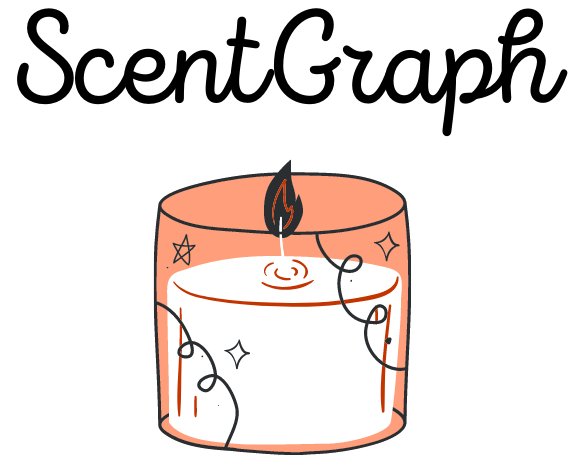Candles create a wonderful ambiance in the home. The soft light and the warm flame create a magical feel, which is part of the reason we love candles so much! Would it be okay to keep the feel going throughout the night?
What happens if you leave a candle burning overnight?
The short answer is, nothing good comes of it. Leaving a candle burning overnight opens up the path to several troublesome consequences. It could jeopardize your home, health, and even your life.
Leaving a flame unattended or letting a candle burn through the night are not good ideas.
Here are a few possible risks and explanations to understand why you should put out any burning candles before you sleep.
5 Things That Can Happen If If A Candle Is Left Burning Overnight
Let’s just say that there is overwhelming evidence that says no one should leave candles burning overnight. But if you need more convincing, here are a few details with facts and statistics added, to make things clearer.
And I’d like to point out, you’re getting all this from candle lovers, not skeptics. It should be evident that we love candles here at scentgraph! But a big part of indulging in this passion and community is also about being responsible.
So, here are a few reasons why you shouldn’t keep candles burning overnight.
1. There Is A Risk Of Fire
A candle is an open flame. And where there is an open flame, there is a risk of fire. When you buy candles, you might have noticed that many of them come with warning and safety labels.
One of those is that you should never leave a candle unattended. Often, there are also warnings on how long a candle can be left burning (many recommend a maximum of four hours, though it can vary depending on the candle).
When you leave a candle burning overnight, there’s a good chance that you’re sleeping, which also means that the candle is unattended. If a problem arises with the candle in such a situation, you would be none the wiser and things could go downhill. Fast.
According to research published by the National Fire Protection Agency (NFPA – [pdf link]), Fire Departments across the US dealt with 7,610 home fires caused by candles every year from 2014-2018.
This translates to an average of 21 home fires caused by candles per day.
And while the bedroom is a great place to light scented candles or even regular candles, remember to put the candles out before you sleep. The report also points out that there’s a “disproportionately high” number of candle fires that start in the bedroom.
These numbers should make it amply clear that there is no safe way to burn candles throughout the night.
Even if you take precautions like keeping candles on a stable, fire-proof surface, keeping them away from flammable materials, and making sure they’re out of reach of children and pets, there might still be unforeseen circumstances.
When left burning for too long, candles can show some weird behavior.
Never leave a burning candle unattended. Do not tempt fate – it’s not worth it.
2. Candle Glass Cracking Or Exploding Candles
As I did my due diligence, fact-checks, and research while writing this article, I ran into several online discussion threads like this one. Some people seem to think that candles in containers, like glass jars, would be safer to use for burning overnight.
That is a terrible idea.
The glass container cracking or exploding candles is a very real risk in this scenario. A candle that burns for way too long (like overnight), risks the container getting weak and cracking, which may also result in an explosion.
As explained in the linked article, a candle in a glass container might see the wick bending towards one side as it burns for too long. The heat from the wax, combined with the heat from the flame, with the possibility of additional factors, can cause the glass container to weaken and crack.
All of this may also result in an exploding candle, which is hugely problematic.
3. Candle Flashover And Secondary Ignition
Here are two things you might not have previously known about burning candles for too long – candle flashover and secondary ignition.
Understanding Candle Flashover
As a candle burns for a long time, the heat from the flame continues and candle wax keeps getting hotter. Eventually, it might get so hot that the wax reaches its flashpoint. The flashpoint is the temperature where the wax gets hot enough to catch fire and burn, without needing the wick.
If the wax in a candle catches fire, it’s also known as the candle flashover. At this point, the candle wax is on fire and the candle is no longer burning controllably.
If the candle has a glass container, this can cause a candle explosion. If the candle has a more resilient container made from metal, ceramic, or concrete, it may not risk explosion.
However, the flashover is still an uncontrolled fire and may also see an occasional splattering of burning or extremely hot wax. All of these situations are dangerous.
Secondary Ignition
Secondary ignition generally means that something other than the candle wick catches fire inside the candle. This can be contaminants and debris like carbon deposits, or trimmed wicks that fall inside the candle. For candles that contain decoration, the decorative object might also be a cause of secondary ignition. As an example, things like flowers or leaves inside a candle could catch on fire.
Other examples could be an incorrect use of essential oils or fragrance oils in the candle, which might cause these oils to catch fire.
Once a secondary ignition event occurs, it can rapidly increase the temperature inside the candle. This can eventually lead to a candle flashover, setting the wax on fire, thus complicating things further.
The possibility of such an event increases the longer the candle is kept burning.
As the candle burns for a long time, you might see things like the wick forming a mushroom. This is basically a carbon deposit at the top of the wick. So, the longer the candle burns, there comes a possibility that the wick generates the mushroom and the debris itself, which might eventually cause secondary ignition.
4. Other Candle-Related Failures

Let’s consider a few unrelated events that might occur, even when someone places a candle the right way. There could be a situation where a candle tips over and falls. This could be a pet, a large insect drawn to the flame, or perhaps just wind pushing something onto the candle.
Much of this is somewhat far-fetched, but weird things are known to happen.
A more credible issue might be something seen with pillar candles. As the candle burns for a long time, the oversized wick might start flickering even without a draft. This can cause uneven burning of the candle and wax dripping down its sides.
As the candle goes lower and towards its base, this hot molten wax can present problems. While it’s not a big fire risk at this point, it can get difficult to deal with. The hot molten wax may also singe or stain surfaces it comes in contact with.
5. Unwelcome Chemicals From Candles
As we know, a burning candle releases several types of chemicals, depending on the candle type and the wax used. A burning candle can release carbon monoxide, carbon dioxide, water vapor, VOCs, and several other chemicals.
For a single candle in a well-ventilated room, none of these emissions pose a health risk. While there are claims of toxicity feeding paranoia, they aren’t usually credible threats. That’s why you don’t have any government or agency in the world breathing down the neck of candle makers or pushing regulation.
To be clear, I’m not downplaying this situation. It is undeniable that potentially dangerous emissions can happen from candles. And exposure to them is unpleasant at best, and dangerous if things get out of hand.
A candle burning overnight is a very long time. The longer the candle burns, the more time these unpleasant chemicals have to accumulate and cause problems. This problem might be compounded if you’re in a small room without enough ventilation.
It may not be immediately life-threatening, but there’s no good reason why anyone sensible would expose themselves to such a situation.
More Aspects Of Burning Candles For Several Hours

How Long Can A Candle Burn?
The burn time of a candle is a function of several factors. These include the wax type, wick thickness, number of wicks, presence of a container, and wick length. Some other variable factors may also be considered, but these are the primary factors.
But if we’re going to be absolutely crude, we could say thicker candles with more wax will burn longer. It’s simply a function of volume.
However, most candle manufacturers suggest that users put out the candle after four hours. This is a good time, during which the wax pool and wick length are manageable. It also works well for the container.
There are outliers, but the conventionally recommended burn time for a single burn is four hours.
Do Candles Go Out On Their Own?
Any candle will go out on its own when wax is no longer available to fuel the flame. However, at this point, users might also want to keep an eye on the candle. If you’ve noticed, pillar candles and taper candles tend to get high, flickering flames when they’re about to burn out.
If you’ve left a candle burning overnight unattended, this rise in the flame can be a problem. The candle becomes more of a fire risk at this time. Additionally, as the candle reaches its base, the surface on which it is placed also needs special attention.
If the surface is flammable, it might catch fire. If the surface isn’t flammable, it might get scorched.
A similar problem exists for candles in containers. As the flame nears the base, it heats not just the side of the candle, but also its base. For glass candles, this can be particularly problematic and can make the container more fragile.
This is why it’s often suggested to discard candles when they have 0.5 inch of wax remaining at the base.
Most modern candles in containers use tabbed wicks (or wick tabs) to prevent the flame from reaching the bottom of the container. It’s a good protective measure, but users should exercise their own judgment as well.
Is It Safe To Sleep With A Candle On?
It is neither safe nor wise to sleep with a candle lit. Candles have an open flame, and therefore should never be left unattended. There is always a chance that a burning candle will start a fire, and the situation could worsen quickly if no one’s there to notice any problems.
Such a thing is possible even if you’re very careful in placing the candle somewhere. The wisest path is to never sleep with a candle on. If it’s time to sleep, put out the candle.
Is It Good To Light Candles At Night?
Yes, candlelight and ambiance appear at their very best during the night and late evening. It’s a delight to enjoy the candle’s ambiance and light during this time.
Some people even suggest lighting a candle an hour before sleeping and disconnecting technology (mobile phones and computers) for a more restful sleep.
Just remember to put out the candle before you doze off!
Is Leaving A Candle On Overnight Dangerous? – Conclusion
Let’s circle back to the original question – what happens if you leave a candle burning overnight?
Well, this article has a detailed discussion, and we can say the original answer still stands.
Nothing good comes out of leaving a candle burning overnight.
It is irresponsible and dangerous. Candles have a flame and should not be left unattended. Keeping a candle burning overnight is dangerous and can cause serious problems and remains a fire hazard.

